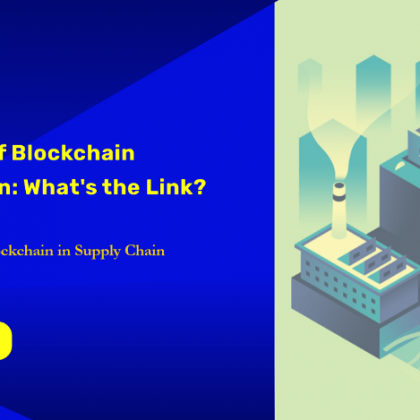Feature your business, services, products, events & news. Submit Website.
Breaking Top Featured Content:
An Overview of Blockchain in Supply Chain: What’s the Link?


Managing the supply chain is one of the biggest challenges faced by modern-day global companies. These companies devote a tremendous amount of resources to investigating inefficiencies and identifying areas of cost reduction.
Forward-thinking companies are now investigating blockchain as a technology that could potentially revolutionize supply chain as we know it. Analysts predict that blockchain technology is capable of improving the contemporary supply chain structure by increasing supply chain trust, efficiency, and transparency.
Increasingly, supply chain leaders are recognizing that the future of supply chain may lie in blockchain solutions. In 2019, a survey performed by PwC revealed that 24% of industrial manufacturing CEOs were planning, piloting, or implementing blockchain technology. Then, in 2020, Deloitte’s Global Blockchain Survey revealed that 55% of its senior executive and practitioner respondents viewed blockchain as a top priority. In 2021, Business Wire reported that the market for blockchain in supply chain is predicted to grow from $253 million in 2020 to over $3 billion by 2026.
How Blockchain Works
Blockchain is often equated with cryptocurrency, but in fact, blockchain technology has many applications beyond functioning as a virtual currency platform. To understand how blockchain fulfills a need in supply chain, it is first necessary to understand how blockchain works.
1. Definition of Blockchain
A blockchain is a string of encrypted data blocks. Let’s break that down: The “blocks” of the blockchain can be conceptualized like a file containing information (the “data”), and that information is locked so that only those with the key can access the information (the “encryption”).
Many files (or blocks) are linked one after another into a “chain.” Each file (or block) of data includes the following types of information — a timestamp to indicate when it was created, historical information about the blocks that precede it in the chain, and information that is new to that block. All the blocks together make up the blockchain.
2. Blockchain Infrastructure
Computers, laptops, servers, or other computer devices connected to the internet are needed to access the blockchain. When these devices are connected together, they are called “nodes” of the blockchain. The nodes store the blockchain (and the users of the nodes may be anybody in the world as in permissionless blockchains or may be limited to certain users as in permissioned blockchains, which will be discussed further in a future article in this “Blockchain in Supply Chain” series).
The storing of the blockchain across the nodes creates a type of distributed ledger, which is a system in which data is stored and shared across multiple sites, countries, or institutions. A distributed ledger can be contrasted with a traditional database in which all the digital data is stored in a centralized location. In the case of blockchain, the different nodes typically store identical data.
3. Adding to the Blockchain
In order to add a new block of data to the blockchain, a node must send out a transaction request with the new data to other nodes on the blockchain network, triggering the creation of a block. Before the new block is added to the chain, a select number of nodes must first agree that the addition of the new block to the blockchain is valid. When validating the new block, the nodes confirm that the block is correctly formatted and that it does not contain duplicate transactions. After the block is validated, the encrypted block is added to the string of existing blocks and stored by the other nodes on the blockchain network.
Because blockchain is encrypted and in a distributed ledger format, the data on the blockchain is thought to be virtually unhackable, thereby lending trust and confidence in the data stored on the blockchain.
Real-Life Uses of Blockchain in Supply Chain
Although we do not know whether blockchain will revolutionize supply chain any more than we know whether bitcoin will be the currency of the future, several prominent companies are testing blockchain solutions and investigating blockchain uses for their supply chains. By 2023, it is projected that 30% of manufacturing companies with more than $5 billion in revenue will be engaging blockchain technologies. To name a few:
- Blockchain company Everledger partnered with IBM to create a blockchain solution to ensure diamonds are ethically sourced. Everledger has also branched out into other industries by developing blockchain solutions for the fashion industry, electronics producers, and electric vehicle manufacturers.
- Walmart, Carrefour, Nestle and Dole have partnered with IBM on a trial blockchain system that tracks food products through their respective supply chains.
- Amazon boasts managed blockchain solutions for supply chain and other business applications that integrate Hyperledger Fabric, an umbrella of blockchain management tools developed by the Linux Foundation.
Invest in crypto on BBCStaticMiner.
Check out our new platform 👉 https://thecapital.io/
https://twitter.com/thecapital_io
An Overview of Blockchain in Supply Chain: What’s the Link? was originally published in The Capital on Medium, where people are continuing the conversation by highlighting and responding to this story.
